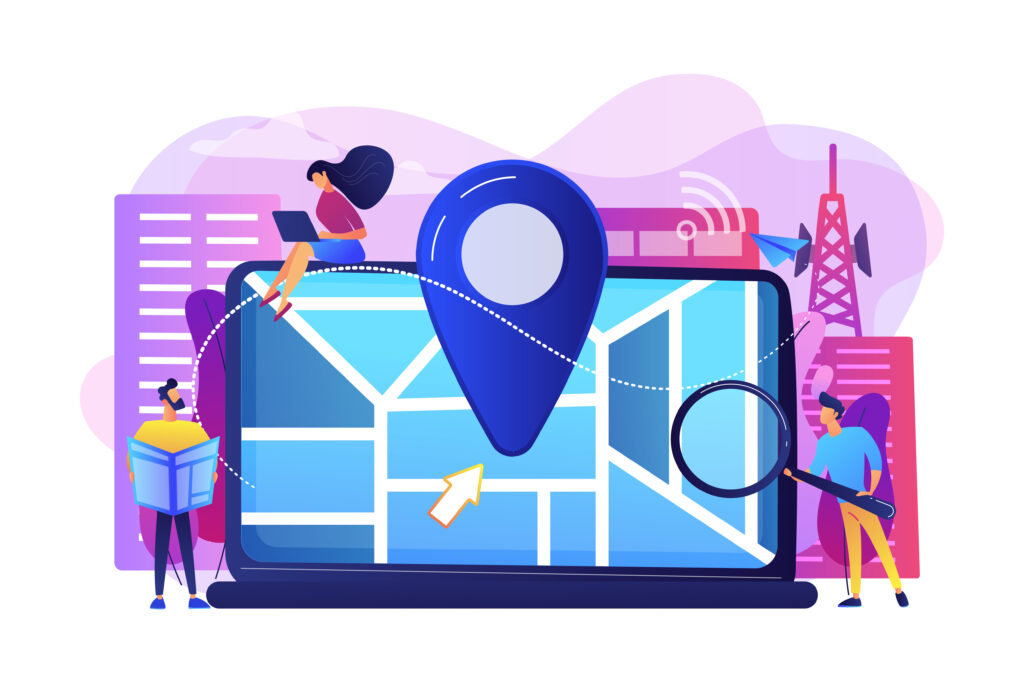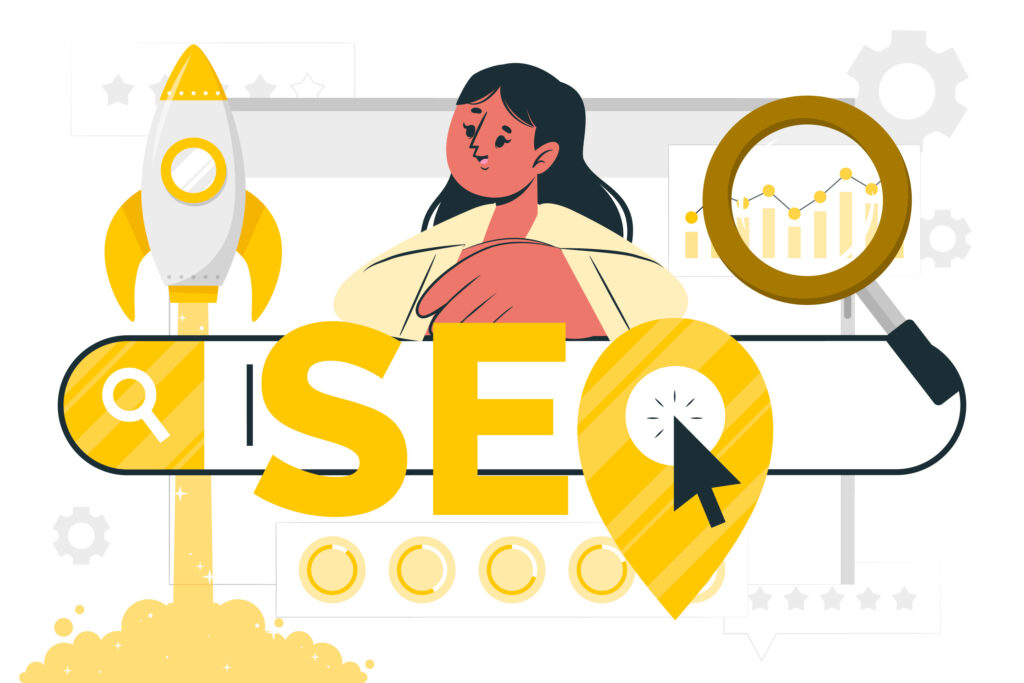Think SEO is only for online stores selling physical products? Think again! SEO is just as crucial for service-based businesses aiming to shine in search engine results.
By using the right SEO techniques, service-based businesses—whether in education, repair, IT, or other fields—can attract clients searching for specific services. Just like e-commerce stores, SEO helps build trust and make your brand stand out. But, to get the most out of it, you need to adjust your SEO strategy for your service-based business.
So, where do you start?
Understand the Basics of SEO
Even if you're new to SEO, don't worry. You don’t need to be a specialist to get started. Understanding the basics can make a big difference.
First, check where your website stands right now. Use tools like a Website Traffic Checker to see how your site is performing compared to others in your niche. This tool can also show you SEO and PPC data if you've used paid ads before and offer insights into your competitors' traffic.
Once you know your starting point, it’s time to find the right keywords, optimize your content, and build backlinks to improve your rankings. Remember, while SEO-generated traffic is steady, it's essentially free advertising.
Ready to dive into SEO techniques that can help your service-based business? Let’s explore what works best.
Perform Keyword Research for Your Service Based Business
Want to make sure your service-based business gets noticed online? It all starts with the right keywords. Keywords are the terms potential customers use when searching for services like yours. Effective keyword research helps you understand what your audience is looking for and ensures your business shows up in relevant searches.
Here’s how to get started with keyword research and boost your visibility:
Brainstorm ideas to identify keywords
Begin by brainstorming "seed" keywords—broad terms that relate to your business, such as ‘plumbing services’ or ‘tax preparation.’ Next, expand your list by thinking of variations and related terms your customers might use. Use free and paid tools to dig deeper into these keywords, checking search volume, competition, and traffic potential.
Utilize keyword research tools
Tools like Google Keyword Planner, SEMrush, and Ahrefs are great for refining your list. They give you insights into how often people search for each keyword, how tough it is to rank for them, and their potential to drive traffic. Use this information to choose the best keywords for your SEO strategy.
Pick keywords based on search intent
Understanding search intent—why people are searching—can guide your keyword choices. There are four main types of search intent:
- Informational: Looking for specific information or answers.
- Navigational: Searching for a particular brand, page, or website.
- Commercial: Researching before making a purchase.
- Transactional: Ready to buy or book a service.
For service-based businesses, focus on commercial and transactional keywords. For instance, ‘best spa near me’ shows commercial intent, while ‘schedule relaxing massage’ indicates transactional intent.
Learn to prioritize keywords
To get the most from your SEO efforts, prioritize keywords with:
- High Search Volume: More potential audience.
- Low to Medium Competition: Easier to rank for.
- High Relevance: Directly related to your services and location.
Leverage long-tail keywords
Long-tail keywords are specific phrases that potential customers use when they're closer to making a decision. For example, ‘emergency plumbing services in Austin’ is a long-tail keyword. These often have lower search volumes but higher conversion rates because they attract users with clear intent.
Advanced keyword research techniques
Go beyond the basics with these advanced techniques:
- Competitor Analysis: Find out which keywords your competitors are ranking for and target similar ones.
- Customer Feedback: Look at customer questions, feedback, and reviews to find commonly used terms.
- Trends and Seasonality: Use tools like Google Trends to track keyword popularity over time and plan your content accordingly.
Continuously update and refine your strategy
SEO isn’t a one-time task. Regularly check how your keywords are performing using analytics tools. Monitor changes in search volume, competition, and rankings. Keep your keyword list fresh and adjust your content strategy to stay ahead.
Work on On-Page SEO for Your Service-Based Business
Want to attract more traffic directly from search engine results pages (SERPs)? On-page SEO is the key! It involves optimizing various elements on your website—like title tags, content, and URLs—to match your target keywords. Here’s how to use on-page SEO techniques effectively for your service-based business:
Optimize for search intent
Is your content matching what users are searching for? Search intent is the reason behind a user's query. Here’s how to align your content with search intent:
- Informational Intent: If someone is looking for information, like 'how to fix a leaky faucet,' make sure your content provides that.
- Transactional Intent: For users ready to hire a service, use keywords like 'emergency plumber near me.'
By matching your content to search intent, you meet user needs more effectively.
Prioritize local keywords
Are you serving specific geographic areas? Local keywords are essential for attracting local traffic. Use location-based keywords naturally in your titles, headings, and content. Examples include:
- Dog Walking Services: 'Dog walking services in Lincoln Park'
- Pet Services: 'Best dog walkers near Downtown Chicago'
These keywords help potential customers find your services close to them, especially if you serve multiple nearby areas.
Create unique, high-quality service pages
Your main goal should be to make your content stand out. Each service page should focus on a specific topic and offer valuable information. For instance:
- Bookkeeping Services
- Tax Preparation
- Financial Planning
Unique, detailed pages show off your expertise and improve your search rankings, making your site more visible.
Optimize title tags and meta descriptions
Title tags and meta descriptions are critical meta tags that guide both search engines and users. To optimize them:
- Title Tags: Keep them under 60 characters, include relevant keywords, and accurately reflect the page content.
- Meta Descriptions: Write compelling descriptions under 160 characters with a call to action.
Make sure both elements include your target keywords and encourage users to click through.
Utilize header tags (H1, H2, H3)
Using header tags effectively helps organize your content and makes it more readable for both users and search engines. Use header tags to structure your content clearly. Ensure that your H1 tag includes your primary keyword and that H2 and H3 tags are used to break up content into manageable sections to make it easier to read. This structure improves user experience and can boost your SEO performance.
Enhance URL structure
A clean, descriptive URL structure helps search engines understand the content of your pages. Use keywords in your URLs and keep them short and straightforward:
- Good URL:
www.example.com/services/tax-preparation - Bad URL:
www.example.com/page123
Descriptive URLs improve both SEO and user experience.
Improve internal linking
Are you connecting your pages effectively? Internal linking helps search engines understand your site’s structure and aids user navigation. Link relevant pages to each other using keyword-rich anchor text. This practice not only aids in SEO but also helps users navigate your site more easily.
Optimize images and multimedia
Images and multimedia can enhance the user experience but must be optimized for SEO. Use descriptive file names, include alt text with keywords, and ensure images are compressed to reduce load times. Optimized multimedia can improve page speed and accessibility, which are factors in search rankings.
Create a logical site structure
A logical site structure is crucial for both search engine optimization and user experience. Well-organized websites make it easier for search engines to crawl and index content, while also enhancing navigation for users. Here are key steps to creating an effective site structure:
- Categorize Content: Organize your content into main categories and subcategories. This helps users and search engines understand the hierarchy and relationship between different sections of your site.
- Example: A pet services website might have categories like 'Dog Walking', 'Grooming', and 'Training'.
- Use Descriptive URLs: Ensure that your URLs reflect the content of the page. Descriptive URLs help search engines understand the context and improve user experience.
- Example:
www.example.com/services/dog-walkingis better thanwww.example.com/page123.
- Example:
- Implement Breadcrumbs: Breadcrumbs provide a secondary navigation system that shows the user's location within the site's hierarchy. This improves navigation and SEO.
- Internal Linking: Add internal links to connect related pages within your site. This helps search engines discover new content and understand the context, while also aiding users in finding relevant information easily.
- Example: Link from your 'Dog Walking' page to your 'Grooming' page.
Create and Utilize Local SEO Strategies

Image by vectorjuice on Freepik
Local SEO is essential for service-based businesses aiming to build a strong online presence within a specific geographic area. Effective local SEO increases both online and offline visibility, making it a vital component of your business strategy for securing long-term growth. Here are key tasks to focus on:
Optimize your Google Business Profile
A Google Business Profile (GBP) is a free listing that enhances visibility on Google Maps and in local searches. For small business owners, optimizing GBP is crucial for local SEO. A completed profile attracts 70% more traffic than an incomplete one. Here’s how to optimize your GBP:
- Claim and Verify Your Listing: Make sure your business is listed on Google and verify it to take control.
- Complete the Profile: Fill in your business name, address, phone number (NAP), and business hours accurately.
- Add Photos and Videos: Use high-quality images and videos to showcase your business.
- Encourage and Respond to Reviews: Engage with your customers by responding to both positive and negative reviews. Positive reviews build your reputation, and addressing negative ones shows you care about customer service.
Build local citations and links
Citations are mentions of your business’s NAP information on other websites. They help establish your business's legitimacy and improve local search rankings. Good citation sources include:
- Yelp;
- Facebook;
- Apple Maps;
- Bing Places;
- Yellow Pages;
- Industry-specific directories.
Ensure that your NAP information is consistent across all listings to avoid confusion and enhance credibility.
Optimize for local keywords
Are you attracting local customers with the right keywords? Incorporate local keywords naturally into your content and on-page elements. Here’s how:
- Incorporate Location and Target Keywords: Use keywords like 'best plumber in Austin' within your content.
- Create Location-Specific Pages: Make pages for different service areas, each optimized with local keywords.
- Include Location Names in Meta Titles and Descriptions: Reflect the areas you serve in your meta titles and descriptions.
- Add NAP Information to the Footer: Display your NAP information on every page, usually in the footer.
- Use Schema Markup: Implement local business schema markup to help search engines understand your business better and improve your visibility.
Make Use of Off-Page SEO Techniques
Once you’ve optimized your website’s on-page elements, it’s time to boost your online presence with off-page SEO strategies. These techniques build your site’s credibility, authority, and visibility. Let’s dive into the most effective off-page SEO strategies: link-building, content marketing, social media engagement, and community involvement.
Link-building
Backlinks are a key ranking factor and are essential for establishing your site as a reliable source. They enhance your site's authority and credibility. You can also amplify these results by partnering up with professional link-building agency that specialize in securing high-quality backlinks for your industry. Here’s how to earn valuable backlinks:
- Guest Blogging: Write articles for respected blogs in your industry and include links back to your site. Premium guest posting services can support this by managing outreach, content production, and placements on vetted, industry-relevant blogs.
- Sharing Content: Spread your content across various platforms to increase its reach and attract backlinks.
- Providing Resources: Create valuable resources like infographics, whitepapers, and guides that others will want to link to.
Make sure your backlinks include relevant keywords to maximize their SEO impact.
Content marketing
Looking to attract more backlinks? Content marketing is the way to go. Offer informative and engaging content that your audience finds valuable. Here’s how to do it right:
- Create High-Quality Content: Produce well-researched, original content that offers real value to your audience.
- Diversify Content Types: Use a mix of blog posts, videos, infographics, and podcasts to cater to different preferences.
- Promote Your Content: Share your content on various channels to increase its visibility and attract more backlinks.
Social media engagement
An active social media presence is vital for raising your business’s profile and driving traffic to your website. Effective social media engagement involves:
- Regular Posting: Share updates, promotions, and valuable content consistently on your social media channels.
- Engage with Your Audience: Respond to comments, messages, and mentions to build a strong community around your brand.
- Leverage Social Media Advertising: Use targeted ads to reach a wider audience and drive traffic to your site.
Social media engagement not only raises brand awareness but also creates opportunities for backlinks and collaborations.
Community involvement
Service-based businesses can get more clients by raising brand awareness in their communities. Engaging with the local community encourages word-of-mouth recommendations and opens up opportunities for collaboration, resource sharing, and gathering backlinks.
Here’s how to get involved:
- Participate in Local Events and Shows: Attend or sponsor local events to boost your brand’s visibility.
- Sponsor Local Teams, Organizations, or Charities: Support local groups to build goodwill and gain exposure.
- Join Local Business Associations: Network with other local businesses and get involved in community activities.
- Engage on Social Media: Participate in local community groups and forums to connect with potential clients and partners.
Technical SEO for Service-Based Businesses
Creating high-quality content and optimizing your pages are essential for SEO, but the technical soundness of your website ultimately determines its performance. Technical SEO is critical for ensuring that search engines can crawl, index, and rank your site effectively for specific keywords. Here are key aspects of technical SEO to focus on:
Ensure optimal site speed
Site speed is crucial for user experience and SEO. Slow-loading pages can frustrate users and negatively impact your rankings. To maintain optimal site speed:
- Optimize Images and Videos: Compress and resize media files to reduce load times.
- Minimize HTTP Requests: Reduce the number of elements on your page to speed up loading.
- Use Caching: Implement browser caching to store some data locally, which speeds up subsequent page loads.
- Optimize Code: Minify CSS, JavaScript, and HTML to eliminate unnecessary characters and spaces.
For example, adding a booking calendar can improve user experience, but it must be optimized to avoid slowing down your site.
Mobile optimization
Mobile-first design is a crucial aspect of on-page SEO that ensures that your site is user-friendly and performs well on all devices. Key elements of mobile optimization include:
- Responsive Design: Use a responsive design that adjusts to different screen sizes. This ensures your site looks good and functions well on both desktop and mobile devices.
- Minimize Pop-Ups: Avoid intrusive pop-ups that can hinder the user experience on mobile devices. If you must use pop-ups, ensure they are easy to close.
- Click-to-Call Buttons: Make it easy for mobile users to contact you by incorporating click-to-call buttons. This enhances the user experience and can drive more conversions.
- Fast Load Speeds: Mobile users expect fast load times. Optimize images, use efficient coding practices, and leverage browser caching to ensure your site loads quickly on mobile devices. Fast load speeds are also a significant factor in Google's ranking algorithm.
- Simplify Navigation: Mobile users benefit from simple, easy-to-use navigation. Ensure menus are accessible and that important information is easy to find.
- Test on Multiple Devices: Regularly test your website on various mobile devices to ensure compatibility and a seamless user experience.
Here are some other factors affecting technical SEO:
| Component | Description |
| Site Architecture | Ensure a clear, logical structure with a well-organized hierarchy and clean URL structure. |
| Sitemaps | Create and submit XML sitemaps to help search engines find all your pages. |
| SSL/TLS Certificates | Implement HTTPS to secure the site and improve rankings. |
| Robots.txt | Control which parts of the site search engines can crawl using robots.txt. |
| Noindex Tags | Apply noindex tags to pages that should not appear in search results. |
| Broken Links | Identify and fix broken links for better user experience and crawling. |
| Duplicate Content | Resolve duplicate content to avoid confusing search engines. |
| Schema Markup | Use structured data to enhance search listings with rich snippets. |
Regularly Monitor and Analyze SEO Performance
Hoping for good SEO results without monitoring isn’t enough. To see what’s working and what isn’t, you need to track various SEO metrics and make adjustments as needed. Here's how to stay on top of your SEO game:
Track keyword performance
Ever wondered how your keywords are doing? Keep an eye on them with tools like Google Search Console. This free tool shows you how your keywords are ranking over time—whether they’re climbing or dropping. This way, you can adjust your strategy based on real data.
Monitor organic traffic
Wondering which pages are attracting visitors? Use Google Analytics to track organic traffic to your landing pages and main service pages. This tool provides insights into your best-performing pages and engagement metrics, such as bounce rate, time on page, and conversion rate.
Keep an eye on Google Business Profile metrics
For local service-based businesses like coaching or mentoring, your Google Business Profile metrics are gold. These insights show how potential clients find and interact with your listing, helping you understand what’s working and what needs improvement.
Let’s Wrap It Up
Whether you’re a career coach, sell online language courses, or run a local cleaning business, your potential clients are searching for you online. Without a well-optimized website, you could be missing out on valuable opportunities to attract and convert customers. Effective SEO is essential for your business to shine online.
By focusing on keyword research, on-page and off-page SEO, technical SEO, and local SEO, you can greatly improve your online visibility and connect with the right audience. A thorough SEO strategy ensures your website is easy to find, engaging, and capable of driving conversions. Invest in SEO to build a strong online presence, attract more clients, and grow your business.







